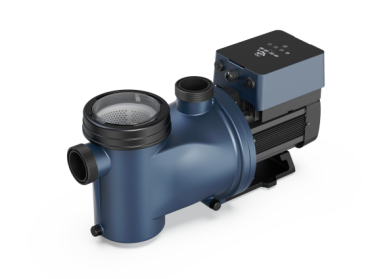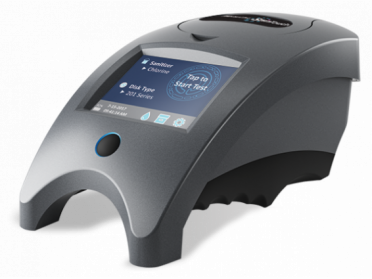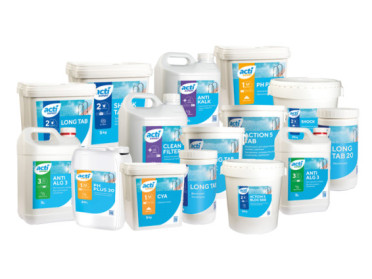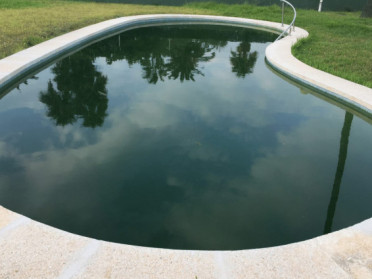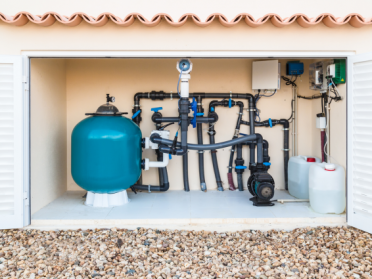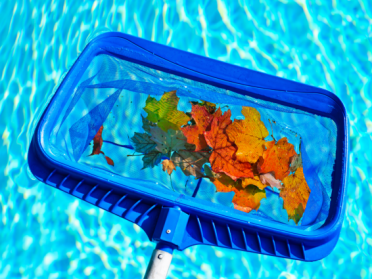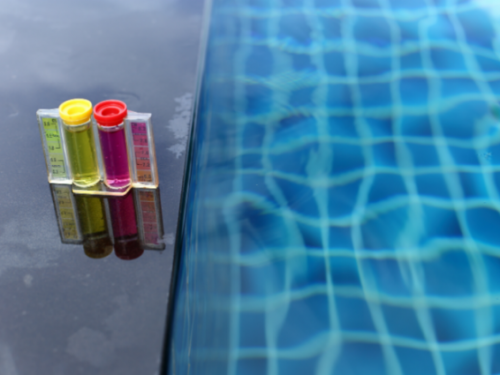
Pool Care Basics: Pool Water Info and Tips
Category : Maintenance
You can transform your backyard from a boring patch of land to a luxurious retreat with one exciting addition—a swimming pool! Of course, swimming pools aren’t all fun and games. You need to know how to maintain your pool in order to keep it sparkling clean.
Swimming pool care intimidates many potential pool owners, but it’s really not that complicated. If you’re wondering how to maintain a swimming pool, this guide should help. Keep reading for the scoop on proper pool maintenance.
First of all, it’s crucial that you test your water frequently if you want to keep it chemically balanced and avoid problems like algae, mineral buildup, and corrosion. During the summer swim season, test your pool water two to three times a week. You can test more infrequently during the winter, about once a week.
Some people hire a pool maintenance company to keep their pools in shape and others prefer a DIY approach. If you want to test pool water yourself, you’ll need a good testing kit. Pool testing kits come in liquid and test strip form. Test strips are quicker and easier to use, so that method is easiest for someone new to pool maintenance. These test strips should test the following chemical levels:
- pH: This measures how acidic your pool water is, with a range of 0 to 14. A neutral pH is 7; numbers less than 7 are acidic and greater than 7 are basic. The further the measurement veers to either end of the spectrum, the more extreme it is as an acid or base. For pool water, you want a pH of around 7.5, or slightly basic. If pool water is acidic, it can corrode pool surfaces and equipment. A pH that goes too far on the base scale could bring cloudy water, scaling, and mineral deposits. After testing pH levels, you can adjust your water using chemicals such as sodium carbonate, sodium bicarbonate, muriatic acid, or sodium bisulfate.
- Calcium Hardness: This measures the calcium level of the pool water. Too much calcium can cause cloudy water and deposits on pool surfaces and equipment. If you have hard tap water (high mineral content) try putting a filter on the hose you use to fill your pool. This can prevent excess calcium from flowing into your pool. Low calcium levels can erode plaster, concrete, and pool equipment. This “soft” water can damage vinyl liners so that you have to replace them sooner. Adjust calcium upward with a hardness increaser. Try to get your pool calcium levels in a range of 200- 250 parts per million ppm for concrete pools or 175-225 ppm for vinyl pools.
- Total Alkalinity: This measures pool water’s buffering ability to respond to pH changes. You want your pool’s total alkalinity level to stay around 120-150 ppm in order to protect your water from substances that might shift pH levels. Low total alkalinity can result in pH bounce (fluctuations), as well as water that corrodes and stains pool surfaces. High total alkalinity can cause pH fluctuations, cloudy water, and scaling. Use an alkalinity booster or consult your pool professional for advice on restoring proper total alkalinity levels.
- Metals: Metals such as copper, iron, and manganese can appear in pool water. Metals may be naturally present in a water source or they can leach into water from deteriorating metal pipes or plumbing. They cause trouble by staining the pool’s surface and discoloring water. Test for metals like copper and iron with a home test kit or send a water sample for lab testing. If metals are present in your pool, use a stain and scale remover on a regular basis. To reduce metals, add a filter to your pool hose or add metal removing chemicals to your pool water.
|
Test |
Range |
|
pH |
7.2 - 7.6 |
|
Total Alkalinity |
80 – 200 mg/l |
|
Calcium Hardness |
80 – 200 mg/l (Concrete Pools) |
|
Calcium Hardness |
150 – 200 mg/l (Vinyl Pools) |
|
Free Chlorine (exluding cyanurate treated pools) |
0,5 - 2 mg/l |
|
Free Chlorine (cyanurate treated pools) |
3 - 5 mg/l |
|
Free Bromine |
4 – 6 mg/l |
|
Metals: Copper |
0 mg/l |
|
Metals: Iron |
0 mg/l |
New to Above Ground Pool Maintenance?
So how do you maintain an above ground pool? Both inground and above ground pools have similar maintenance needs. For an above ground pool, you should keep your filter updated and regularly test your water. Add chemicals as needed to bring levels in the desired range. Luckily, above ground pools can be easier to maintain because they’re usually smaller than in-ground pools. That means less time spent vacuuming and scrubbing and less money for chemicals. Besides keeping your pool water sparkling, remember to regularly maintain the deck around your above ground pool.
Pool Chemicals for Beginners
If you think you need to be a scientist to properly maintain pool water, think again. A little chemical knowledge can go a long way, and it’s not that complicated even for beginners. To get a grasp of pool chemicals, start with these simple definitions.
Chlorine: This is probably the most well-known pool chemical, and for good reason. Add it to sanitize pool water and break down bacteria. Stabilized chlorine products—including chlorine tablets, skimmer sticks, and granules--don’t degrade in the sun, so they keep outdoor pools clean. Ask your pool professional what form of chlorine works best for your pool. Whatever chlorination method you use, aim for a constant free chlorine level of 1-3 ppm.
The Perfect Pair: Spas and Bromine
Just like chlorine, bromine kills bacteria, but this chemical works better in hot water. That means bromine is the desired chemical to clean and sanitize spas and warm pool water. You can install an automatic brominator to simplify bromine application.
Shock Treatments: Shocking your pool means that you add chemicals to it to remove chloramines, waste and bacteria, and algae. You might need to shock your pool after heavy pool use or rainfall and at the start of the pool season. Shocking your pool regularly through the swim season keeps the pool water clean and clear. There are chlorine and non-chlorine shock treatments available.
Algaecide: If your pool has gone green, you probably have a case of algae. Conditions like lots of sunlight, lack of circulation, or excess nitrates can provide a breeding ground for algae. To free your pool from algae, you can add algaecides. These chemicals reinforce your normal sanitizers to give algae the boot. Add algaecide after each shock treatment.
Pump Up Pool Maintenance
Pool pumps play a central role in keeping your pool water clean. The pool pump keeps water moving, circulating it through the filter to remove dirt and leaves.
Pool pumps don’t require much work on your part. Just flip a switch and let the pool pump get your water moving. Run your pump for several hours a day, increasing run time in warmer temperatures and when you have a bigger pool. Ask your pool professional how long you should run your pump. They can help you weigh factors like outside temperature, pool size, pump size, and pool use.
Running your pool pump each day will help keep your water sparkling and ready for swimmers. Plus, it takes work off your hands, preventing more labor-intensive pool maintenance.
Filter Out Unwanted Content
A pool filtration system removes dirt and debris from the water. Swimming pool filters come in three types:
Sand Filters: These inexpensive filters are and easy to use. They filter out dirt and debris through “backwashing,” which means reversing the water flow. To backwash, you should first check the pressure gauge on the filter. An increase of 7- to 10-pounds over normal operating pressure means that you should backwash.
Here are some handy things to know about sand filters:
- You shouldn’t backwash sand filters too often because they actually work better when they’re slightly dirty.
- Clean sand filters with a filter cleaner at least once each swim season.
- Replace your sand filter with a new one approximately every five years.
Cartridge Filters: This filter costs more than a sand filter, but some pool owners think it’s worth the extra investment. Cartridge filters are better at removing dirt and debris than sand filters. Plus, you don’t have to backwash these filters, so maintenance time is reduced. To clean a dirty cartridge filter, simply remove it and hose it off.
Here are a few things you should know about cartridge filters:
- Expect to deep clean cartridge filters at least twice a year. Cleaning requirements vary depending on your pool size and how often people swim. A local pool professional can give you guidance on a schedule for cleaning your cartridge filter.
- You may want to purchase a second filter to have a spare while you’re cleaning your filter. Since the cleaning process takes about 12 hours, a second filter will allow you to continue using your pool while you wait for the cleaned filter to be ready for action.
Diatomaceous Earth (DE) Filters: DE filters work like sand filters and share many similarities. DE filters also require backwashing when operating pressure rises. However, you only need to backwash DE filters a few times a year, meaning they require less maintenance than sand filters. DE filters are the priciest of the filter types, but they provide superior filtration.
Here are some things you should know about DE filters:
- Deep-clean DE filter grids, using filter cleaner, at least once during the swim season. This removes build-up.
- Disassemble, deep clean, and inspect the DE filter once a year. During this inspection, you should look for grid damage, such as tears or rips.
Skimmer baskets perform heavy lifting for pool filtration systems as they collect large debris, like leaves and twigs. Check your skimmer basket often, especially after a storm or heavy use. Empty the skimmer basket at least once a week.
Saltwater Pool Maintenance
Popular saltwater pools require less maintenance than chlorinated pools. This is because these pools feature salt chlorine generators that convert salt to chlorine. However, you should keep up with routine saltwater pool maintenance. Clean salt chlorine generators at least every few months to keep them working well. Also, test your pool water regularly and adjust your salt generator settings as needed to keep pool chemistry balanced.

